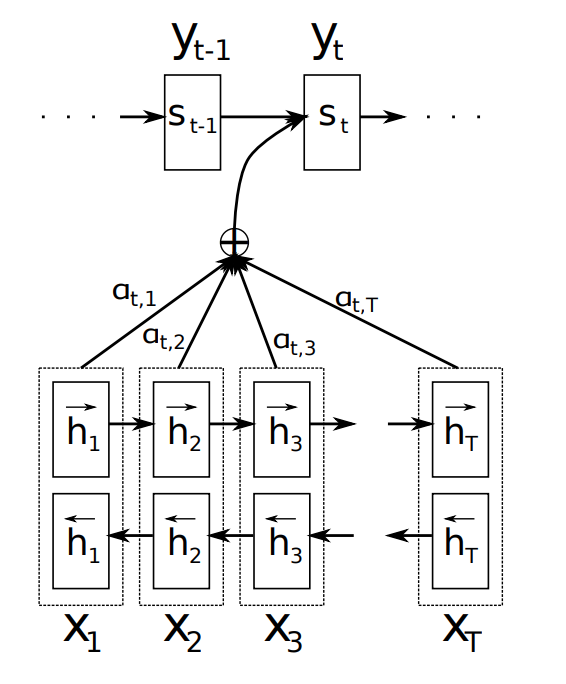independent-research
| Home | Independent Research |
Index
D. Bahdanau, K. Cho, and Y. Bengio. Neural machine translation by jointly learning to align and translate. arXiv preprint arXiv:1409.0473, 2014.
Motivation
The paper proposed a new architecture for machine translation model. Specifically, it added an alignment model to basic RNN Encoder-Decoder.
Approach
Just like traditional machine translation model, the proposed architecture consists of an encoder and a decoder. The encoder reads the input sentence, then convert into a vector, using an RNN such that:

And the decoder “emulates searching through a source sentece during decoding a translation”, which consits of three networks: g(), f() and a():
output (each conditional probability):

where c_i is the context vector, x is the input vector y is the output probability, and s is the hidden state of the RNN.
hidden states:

attentions:
 is an alignment model which scores how well the inputs around position j and the output at position i match.
is an alignment model which scores how well the inputs around position j and the output at position i match.
The architecture of proposed neural machine translation model looks like

The attention weights are based on both input/output position and the values.